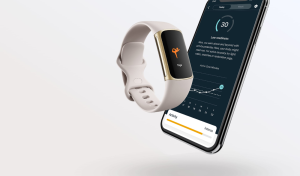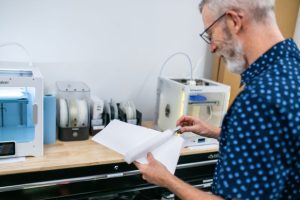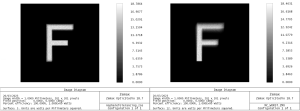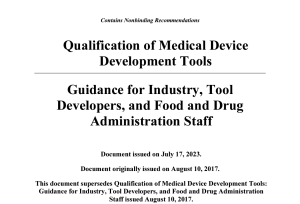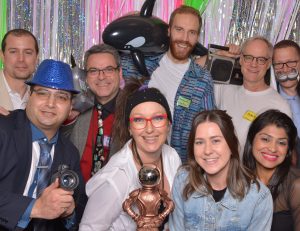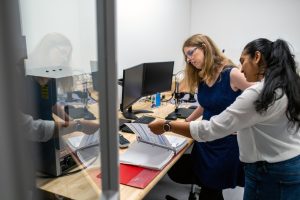 Reduce your Medical Device R&D costs by 50%
Reduce your Medical Device R&D costs by 50%
The Scientific Research and Experimental Development (SRED or SR&ED) Tax Incentive Program has long been the unsung hero of many of Canada’s science and technology development Cinderella stories.
The Canadian SR&ED program provides support in the form of tax credits and/or refunds, to corporations, partnerships or individuals who conduct scientific research or experimental development in Canada.
Drawing from Canadian Revenue Agency’s Guidelines on the SR&ED Investment Tax Credits Policy, this article provides an overview of the program and a 5 step high-level guide on how to prepare an SR&ED tax form (or T661). First, some background:
An important part of Canada’s economic engine since 1944, this tax incentive is the government’s largest single support program for R&D. Annually, this program provides over $3B to over 20,000 companies in Canada, making it one of the more generous R&D programs among Organization for Economic Cooperations and Development (OECD) countries.
What are SR&ED tax incentives?
The SR&ED program provides the following financial incentives:
- Funding for specified scientific and technological advances
- SR&ED expenditures that reduce tax liability in the current tax year or carry forward indefinitely to reduce tax liability in future years
- SR&ED benefits which are distributed in the form of a refundable investment tax credit (ITC), a reduction of taxes payable, or both
Who is Eligible?
Basically, any Canadian business operating and carrying out Research and Development in Canada is eligible. This includes businesses involved in basic or applied research, advancing technology, new materials, devices, products, or processes. There are even some certain expenditures for work performed outside of Canada that may be eligible (i.e. Salary or wages of direct SR&ED related work performed by a Canadian employee who was a resident of Canada at the time the expense was incurred).
SR&ED Program Eligible businesses fall under the following three categories:
- Canadian-controlled private corporations (CCPCs): CCPC may receive a refundable investment tax credit (ITC) on qualified SR&ED expenditures. The rate of refundability is based on taxable income and taxable capital.
- Other Corporations: The ITC is 20% of qualified current and capital SR&ED expenditures. The ITC may be applied to taxes payable and is not refundable. Publicly traded companies fall under this category.
- Proprietorships (individuals), partnerships and trusts: The ITC is 20% of qualified current and capital SR&ED expenditures. After applying the ITCs against taxes payable, you may receive a cash refund on 40% of the balance of the ITCs earned in the tax year.
What is Eligible?
The following is summarized directly from the Canadian Revenue Agency (CRA) website:
Per subsection 248(1) of the Income Tax Act, the definition of “scientific research and experimental development” is: “The systematic investigation or search carried out in a field of science or technology by means of experiment or analysis to advance the scientific knowledge or to achieve technological advancement.”
The CRA calls out the specific categories and what is eligible or not eligible to be claimed. For clarity, this blog uses an example of a medical device company developing a novel urinary catheter with a new anti-microbial coating throughout.
- Experimental Development (i.e. the work done to achieve technological advancement). Example: The experimental development of a novel anti-bacterial urinary catheter.
- Applied Research (i.e. the work done to advance scientific knowledge with a specific application). Example: the applied experiments to evaluate and develop antibacterial coatings for the novel anti-bacterial urinary catheter.
- Basic Research (i.e. the work done to advance scientific knowledge for the sake of scientific knowledge). Example: the basic research of how bacteria interact with a normal urinary catheter compared to the novel product under development.
The guidance goes on to specifically highlight that other work directly in support of the experimental development, applied or basic research may also be eligible. This work must be tied to the needs of the experimental research. This specific work includes:
- Engineering. Example: the engineering of the chemistry to bond to the novel anti-bacterial to the catheter material.
- Design. Example: structural design of the antibacterial catheter.
- Operations research. Example: mathematical treatment of the analysis of the coating process of the antibacterial catheter to gain maximum efficiency.
- Mathematical analysis. Example: the use of computational fluid dynamic modelling to understand fluid flow through the new catheter.
- Computer programing. Example: developing computer code to analyze the catheter’s performance data.
- Data collection. Example: the data collection performed directly to understand the catheter’s experimental performance (i.e. log reduction data of challenge bacteria exposed to the prototype catheters).
- Testing. Example: experiments conducted to support the development of the new catheter (i.e. bacterial recovery tests, pressure tests on prototype parts).
- Psychological research. Example: a scientific study of human interactions and behavior with the novel urinary catheter.
What is NOT Eligible?
The CRA is very specific on what work is not eligible for benefits under the SR&ED program. These items include:
- Market Research or Sales Promotion. Example: Research into sales drivers of the novel anti-microbial urinary device and what the cost target should be.
- Quality control or routine testing of materials. Example: standard experiments and tests conducted to support the development of the new catheter (i.e. bacterial recovery tests, pressure tests on production parts).
- Research in social sciences or the humanities. Example: research into the social impact of having an anti-microbial urinary catheter.
- Prospecting, exploring, or drilling for or producing minerals, oils, or natural gas.
- Commercial production of a new or improved material, device, or product. Example: the new antimicrobial urinary catheter is now in production and is being sold for use in a trial.
- Style changes. Example: the new catheter requires a packaging change for style or branding reasons.
- Routine Data collection. Example: Collection and analysis of the data collected from the standard production testing.
Five Steps to completing the CRA T661 form:
Step 1: Think like a scientist or Engineer. Define the Problem in terms of scientific or technological uncertainty you are trying to overcome. As product developers it is often very easy to define the technological problem in terms of a business case. Turning to the example of an anti-microbial catheter, it is easy to fall into the trap of defining the problem in terms of market opportunity and the general need for a better anti-microbial catheter rather than focusing on the specific scientific & technological issues.
Example of poor definition: Catheter related infections costs the health care system $33K/case. The total addressable market (TAM) for the catheters is expected to reach $85 billion by 2030. Developing an effective antimicrobial urinary catheter has the potential to service $1.2 billion of the TAM.
Example of better definition: Catheter related infections costs the health care system $33K/case. There is a need to develop an antimicrobial catheter that can reduce catheter related infections. The scientific and technological uncertainty we are attempting to address is to select and bind an effective antimicrobial to a urinary catheter that will address the needs of the clinical use case.
Step 2: Think about your audience. The CRA reviewers are people who review hundreds of applications every year. Imagine yourself in their shoes. The CRA auditors usually consist of a team of two individuals:
- A reviewer with a strong accounting background (who reviews all the financials you provide). This person’s role is to review the financial claims (i.e. salaries of scientists/technicians involved, claimed contract costs and materials costs). Get your accounting team to provide the required information on the T661 form and have them communicate directly with this auditor during any audits.
- A scientist or engineer (who reviews the merit of the descriptions provided in the T661). This individual will hopefully have a background in the subject field (i.e. a software engineer reviewing a claim for a novel piece of software under development), however, this may not always be the case. Imagine being tasked with reviewing and understanding a very complex technological challenge. The narrative you provide should be easy to understand by a ‘lay audience’ with sufficient technical background to provide context and enough information to enable the reviewer to dig a little deeper if required. Think of yourself in this role and write up the T661 in a way in which you would be able to understand it.
Step 3: Remember Grade 5 science class! Scientific method (tried and true) arguably dating back to as long ago as 1600 BCE consists generally of these following seven steps:
- Purpose
- Hypothesis
- Materials
- Methods
- Results
- Conclusions
- Discussion
Section B of the T661 form (the main part of the form for describing the SR&ED work) is divided into three sections that essentially follow the scientific method learned when you were 10 years old.
Line 242: What scientific or technological uncertainties did you attempt to overcome (350 words)? Or said another way: What is the Purpose of your work and your Hypothesis?
Example: Catheter related infections costs the health care system $33K/case. There is a need to develop an antimicrobial catheter that can reduce catheter related infections. The scientific and technological uncertainty we are attempting to address is to select and bind an effective antimicrobial to a urinary catheter that will address the needs of the clinical use case. In the 2023 tax year we attempted to address this by performing a down-selection of a library of antimicrobial agents to evaluate antimicrobial performance over a concentration range both in solution and when bound to a urinary catheter test article. Our hypothesis is that there will be an antimicrobial agent that will best meet our performance requirements. The scientific risk and technological uncertainty can be overcome by conducting a systematic series of down selection experiments.
Line 244: What work did you perform in the tax year to overcome the scientific or technological uncertainties described in line 242 (700 words)? Or said another way: Describe the systematic investigation describing your materials, methods, and results.
Example: In the 2023 tax year, we performed the following experiments to overcome the scientific or technological uncertainties associated with selecting the most appropriate antimicrobial agent for use in our novel antimicrobial urinary catheter.
Expt 2023A: A comprehensive literature review was undertaken to systematically research and select candidate antimicrobial agents that would be suitable for our antimicrobial urinary catheter. A down select PUGH analysis was developed and special software was coded to support this effort. The results found 6 candidates coded A-F.
Expt 2023B: Candidates A-F were chemically synthesized, and a minimum inhibitory concentration (MIC) use dilution test method was employed to evaluate antimicrobial efficacy against a broad spectrum of representative Gram-negative and Gram-positive microbes. Candidate A, C and F were selected due to broad spectrum activity at the lowest concentration.
Expt 2023C: Candidates A, C and F were screened for anti-biofilm efficacy using ASTM E2799-11. Candidates A and F were found to be most effective against biofilm.
Expt 2023D: Candidates A and F were evaluated for bonding to prototype urinary catheters (both latex and silicone). Prototype catheters (A1, A2, A3 and F1, F2, F3) were made.
Expt2023E: Prototype catheters were tested by a third-party contract research organization in a modified Biofilm Surface Test Materials (BSTM) Assay to evaluate anti-biofilm efficacy against a broad spectrum of representative Gram-negative and Gram-positive microbes. Catheter A2, A3 and F3 were found to be most effective.
Line 246: What scientific or technological advancements did you achieve or attempt to achieve as a result of the work described in line 244 (350 words)? Or said another way: what were your conclusions and provide a discussion.
Example: In the 2023 tax year, the following systematic technological advancements were achieved as a result of the work described in line 244. A selection of candidate antimicrobials (A-F) were selected as candidates active agents in our antimicrobial urinary catheter. These were down selected to three candidates A, C & F based on in vitro anti-microbial screening performance. Prototype devices were made, and in vitro evaluation of the devices led to down-selection of candidate A2, A3 and F3 to move forward to further development. In the 2024 tax year, we plan to evaluate combinations of the candidate antimicrobials and evaluate physical strength testing of the novel parts and testing of biocompatibility of the devices. Successful prototypes will move to in vivo testing in pre-clinical studies.
A note about word limits: Look at the word count limits and stay within them. This should be a succinct review. Do not try to fill in the exact word count. If you can clearly state what work was performed in 400 words instead of 700, then please don’t fill the rest of the space allocated for line 244 with additional unnecessary information. Put yourself in the position of the reviewer, they have a difficult job to do, and being succinct will be appreciated.
Step 4: Documentation. A requirement of the SRED process is that the applicant provides sufficient evidence that a defined logical path was followed. Good documentation will support this. As a scientist or engineer you are taught to document Everything in excruciating detail so that our work can be independently repeated by others. This training will serve you well in this process. The example uses made up experimental numbers to highlight this. When completing an actual T661s reference the electronic data management system (EDMS) document numbers right in the body of the text so that (in the event of an audit) you can easily sit down with the auditor and pull up the specific test reports, experimental data, contracts etc. in real time. This practice served very well during four recent audits with CRA.
Step 5: File! If you are a first-time applicant, great news! A major goal of the CRA program is to provide education about the program. They offer an in-person visit and most first-time applications are generally accepted as filed. Every Canadian accounting firm will be familiar with the program and should be able to assist. There are literally hundreds of firms that specialize in SR&ED applications. A word of Caution here: there many specialty SR&ED consultancies that work on ‘contingency’ i.e. will complete the T661 forms and related documents in exchange for a percentage of the claim. The upshot being if they are not successful you do not need to pay them anything. The downside, of course, is that the fees for preparing and filing could be a sizeable percentage of a large recovery (usually in the range of 15% to 25% of the total benefit from the claim). This may be the right solution for you, however this is a difficult pill to swallow given the simplicity of the process (as this article has hopefully demonstrated), the lengths at which the CRA will go to assist and, most importantly, using these 5 easy steps, you are in the best position to most accurately complete the T661.
Image: Adobe Stock
Nick Allan is the Bio Services Manager at StarFish Medical. He has provided innovative solutions to client issues ranging from proof-of-concept studies for rapid detection point of care assays to full scale regulatory submission studies, and designed and facilitated more than 500 Unique Research Protocols.
- SEO Powered Content & PR Distribution. Get Amplified Today.
- PlatoData.Network Vertical Generative Ai. Empower Yourself. Access Here.
- PlatoAiStream. Web3 Intelligence. Knowledge Amplified. Access Here.
- PlatoESG. Carbon, CleanTech, Energy, Environment, Solar, Waste Management. Access Here.
- PlatoHealth. Biotech and Clinical Trials Intelligence. Access Here.
- Source: https://starfishmedical.com/blog/5-easy-steps-to-complete-a-canadian-sred-application/
- :has
- :is
- :not
- $UP
- 000
- 1
- 10
- 12
- 15%
- 2%
- 20
- 2023
- 2024
- 2030
- 300
- 350
- 4
- 400
- 5
- 500
- 6
- 700
- 8
- a
- Able
- About
- accepted
- Accounting
- accurately
- Achieve
- achieved
- Act
- active
- activity
- actual
- Additional
- address
- addressable
- Adobe
- advance
- advancement
- advancements
- advancing
- After
- against
- agency
- Agent
- agents
- ago
- All
- allocated
- also
- always
- an
- analysis
- analyze
- and
- Annually
- Another
- any
- anything
- Application
- applications
- applied
- Applying
- appreciated
- appropriate
- ARE
- arguably
- article
- AS
- assist
- associated
- At
- attempt
- attempted
- attempting
- audience
- audit
- auditors
- audits
- back
- background
- Bacteria
- Balance
- based
- basic
- BE
- been
- behavior
- being
- benefit
- benefits
- BEST
- Better
- Billion
- bind
- Blog
- body
- bond
- both
- bound
- branding
- broad
- business
- businesses
- by
- Calls
- CAN
- Canada
- Canadian
- candidate
- candidates
- capital
- care
- carried
- carry
- carrying
- case
- Cash
- categories
- Category
- caution
- certain
- challenge
- change
- Changes
- chemistry
- claim
- claimed
- claims
- clarity
- clearly
- client
- Clinical
- code
- coded
- collected
- collection
- COM
- combinations
- communicate
- Companies
- company
- compared
- complete
- completing
- complex
- comprehensive
- computational
- computer
- concentration
- Conduct
- conducted
- conducting
- consist
- consists
- context
- contract
- contracts
- control
- Corporations
- Cost
- Costs
- could
- count
- countries
- course
- CRA
- credit
- Credits
- Current
- data
- data management
- Dating
- deeper
- define
- defined
- defining
- definition
- demonstrated
- describe
- described
- describing
- Design
- designed
- detail
- Detection
- develop
- developed
- developers
- developing
- Development
- device
- Devices
- DID
- difficult
- DIG
- dilution
- direct
- directly
- Display
- distributed
- divided
- do
- document
- documentation
- documents
- done
- Dont
- down
- downside
- drivers
- due
- during
- dynamic
- e
- earned
- easily
- easy
- Economic
- ed
- Education
- Effective
- efficacy
- efficiency
- effort
- Electronic
- eligible
- employed
- Employee
- enable
- Engine
- engineer
- Engineering
- enough
- essentially
- etc
- Ether (ETH)
- evaluate
- evaluated
- evaluation
- Even
- Event
- Every
- everything
- evidence
- exact
- example
- exchange
- expected
- expense
- experiment
- experimental
- experiments
- Exploring
- exposed
- f1
- facilitated
- Fall
- familiar
- Fees
- field
- filed
- Filing
- fill
- financial
- financials
- Firm
- firms
- First
- flow
- fluid
- focusing
- follow
- followed
- following
- For
- form
- forms
- Forward
- found
- four
- from
- full
- further
- further development
- future
- Gain
- GAS
- General
- generally
- generous
- get
- given
- Go
- goal
- Goes
- good
- grade
- great
- guidance
- guide
- guidelines
- Have
- having
- he
- Health
- Health Care
- here
- Hero
- Hidden
- high-level
- Highlight
- Hopefully
- How
- How To
- However
- HTML
- HTTPS
- human
- Hundreds
- i
- if
- imagine
- Impact
- important
- importantly
- improved
- in
- Incentive
- Incentives
- include
- includes
- Income
- income tax
- incurred
- independently
- individual
- individuals
- Infections
- information
- innovative
- instead
- interact
- interactions
- into
- investigation
- investment
- involved
- issues
- IT
- items
- Job
- knowledge
- large
- largest
- learned
- Led
- liability
- Library
- like
- limits
- Line
- literature
- little
- log
- logical
- Long
- Look
- lowest
- made
- Main
- major
- Making
- management
- management system
- manager
- many
- Market
- material
- materials
- mathematical
- max-width
- maximum
- May..
- means
- medical
- medical device
- Meet
- Merit
- method
- mic
- minerals
- minimum
- modelling
- modified
- more
- most
- move
- move forward
- must
- NARRATIVE
- Natural
- Natural Gas
- Need
- needs
- New
- normal
- note
- novel
- now
- numbers
- of
- offer
- often
- oils
- Old
- on
- ONE
- operating
- Opportunity
- or
- organization
- Other
- Others
- our
- out
- outside
- over
- Overcome
- overview
- packaging
- part
- partnerships
- parts
- path
- Pay
- People
- percentage
- perform
- performance
- performed
- performing
- physical
- piece
- plan
- plato
- Plato Data Intelligence
- PlatoData
- player
- please
- Point
- poor
- position
- potential
- practice
- Prepare
- preparing
- pressure
- private
- Problem
- process
- processes
- producing
- Product
- Production
- Products
- Program
- Programs
- promotion
- protocols
- prototype
- prototypes
- provide
- provided
- provides
- publicly
- put
- qualified
- R&D
- range
- ranging
- rapid
- Rate
- rather
- reach
- real
- real-time
- reasons
- receive
- recent
- recovery
- reduce
- reduction
- reference
- refund
- Refunds
- regulatory
- related
- remember
- repeated
- Reports
- representative
- required
- requirement
- Requirements
- requires
- research
- research and development
- REST
- result
- Results
- revenue
- review
- reviewing
- Reviews
- right
- Risk
- Role
- routine
- Said
- sake
- salaries
- salary
- sales
- Scale
- Science
- Science and Technology
- SCIENCES
- scientific
- Scientific Research
- Scientist
- screening
- Search
- sections
- select
- selected
- selecting
- selection
- Series
- serve
- served
- service
- seven
- Share
- should
- silicone
- Simple
- simplicity
- since
- single
- sit
- So
- Social
- Social impact
- Software
- Software Engineer
- sold
- solution
- Solutions
- some
- Space
- special
- special software
- specialize
- Specialty
- specific
- specifically
- specified
- Spectrum
- standard
- Starfish
- State
- stay
- Step
- Steps
- Stories
- strength
- strong
- structural
- studies
- Study
- style
- subject
- submission
- successful
- sufficient
- suitable
- support
- Surface
- system
- TAM
- Target
- taught
- tax
- tax credit
- taxable
- Taxes
- team
- Technical
- technological
- Technology
- Technology Development
- terms
- test
- tested
- Testing
- tests
- text
- than
- that
- The
- their
- Them
- then
- There.
- These
- they
- Think
- third-party
- this
- three
- Through
- throughout
- Tied
- time
- to
- Total
- traded
- Training
- treatment
- trial
- tried
- true
- Trusts
- try
- trying
- Turning
- two
- uncertainties
- Uncertainty
- under
- understand
- understanding
- unique
- unnecessary
- use
- use case
- uses
- using
- usually
- very
- Video
- Visit
- vivo
- wages
- was
- Way..
- we
- WELL
- were
- What
- What is
- when
- which
- WHO
- Wikipedia
- will
- with
- within
- Word
- words
- Work
- would
- write
- year
- years
- you
- Your
- yourself
- youtube
- zephyrnet

